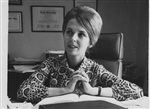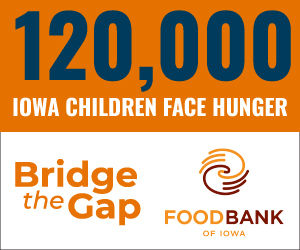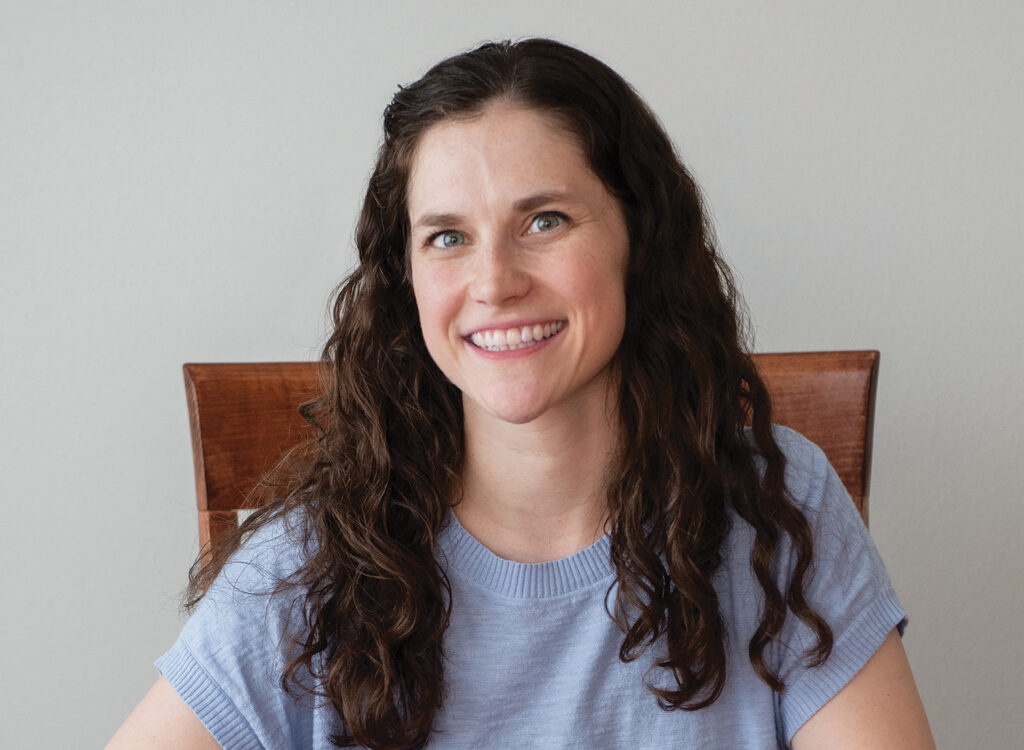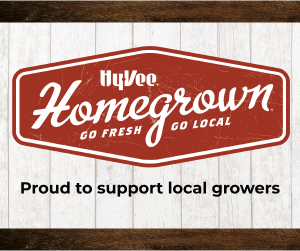Local civil rights, feminist icon’s stories recorded in new biography

EMILY BLOBAUM Oct 15, 2020 | 6:26 pm
8 min read time
2,019 wordsArts and Culture, Business Record InsiderAt the very end of his 335-page biography “Unstoppable: The Nine Lives of Roxanne Barton Conlin,” author William B. Friedricks sums up the life of Conlin in nine roles: wife, mother, grandmother, attorney, feminist, political activist, political candidate, ballroom dancer and foster mom for kittens. Conlin recently talked with the Business Record about some of the stories told in the book.
What’s the story behind the title of your biography?
My whole family and friends participated [in the naming of the book]. I liked “Irresistible” but that was vetoed. My trainer liked “Not if I Don’t Want To.” There was “Irrepressible,” “The Advocate,” “Justice for All,” “The Only Thing I Want to Do Is Change the World,” “Unsinkable.” I’m good with “Unstoppable.” But I wanted to call it “Unstoppable: The Nine Lives of Roxanne Barton Conlin, Volume One.” As for the nine lives part of the title, being a foster parent for the Animal Rescue League has played such a large role in my life, so it seemed appropriate to acknowledge that.
In it, you’re quoted as saying, “The only thing I want to do is change the world.” Why did you want to change the world, and what did you want to change?
From a very young age I have recognized and fought inequality of various kinds. I was the schoolyard protector of bullied children. I worried about the Korean War. I was very angry when [the war] got over and no one told me, so I started reading the newspaper. I had a wonderful mom who cared about everybody, but the rest of my family does not have that same kind of burning desire that I have had all of my life to change for the better for everybody.
Early in your life you realized that being a girl was not a favored status in society. You refused to wear dresses, and when you met your husband, Jim, you told him, “I do not cook, clean, wash, iron. And I never will.” Talk about what gender roles were like when you grew up and how you defied them throughout your career.
In the ’40s, ’50s and ’60s, gender roles – despite the fact that during the war women ran the factories – gender roles were strictly enforced by societal norms. I didn’t accept that. I was a tiny little girl but I would do whatever I wanted to do. My best friends were boys and I was apparently the terror of the neighborhood. It was really pretty clear that if I wanted to be a force, I had to be a male, or I had to defy gender roles. I couldn’t be a male, so I simply defied gender roles and I’m still doing that. Going to law school was a huge defiance of the roles assigned to women. I had a lot of trouble in law school, but not enough trouble to get me out.
Like many other women, you realized you were a feminist after reading “The Feminine Mystique” by Betty Friedan. How have you seen feminism evolve throughout your life?
It’s been remarkable. I have a really long view because I’m really old. When I gave my first speech on women’s rights in the late ’60s, I talked about equal pay and equal employment rights, which by that time were both guaranteed by the law. It was not a well-received speech. I have often said it’s a wonder that I didn’t get stoned. But that’s 1968. I have been giving roughly the same speech since then. Now I give it to every kind of audience, and everything that I talked about in 1968 has more or less come to pass. When I started speaking about women’s legal rights, women were earning 54 cents on the dollar that men earned. Now we’re at 77 or 78 cents. I know that isn’t full parity, but think of that. Making half of what men made and now making three-quarters of what men make makes a huge difference in the lives of women. I’m not suggesting for a moment that we have reached nirvana. We still have a long way to go on the road to equality, but the long view gives you a remarkable progress. We have a law that prevents discrimination on the basis of credit. When I was an assistant attorney general, if you were a female and you wanted your income to count for the purchase of a home, you had to sign a form that promised that you would not get pregnant. Seriously! It was a ridiculous thing. We have laws now protecting women in a number of areas that we never had before the ’60s. We have made enormous progress.
What are the biggest issues that women face today?
We still need a constitutional amendment that protects our legal rights. We need the Equal Rights Amendment, in my opinion. We have seen how fragile our legal rights are. We have seen the possibility of losing the right to equality in the workplace. That’s the top of my list. I still get five or 10 calls a day from people who are experiencing discrimination in the workplace, housing and education. When I first started doing this work in the attorney general’s office in 1969, I truly felt like “OK, well I will do this for about 10 years then it will be all over. People will know the law, they will follow the law, and I can move on to some other kind of law practice.” That is how naive I was. One of the things that stuns me is that sexual harassment has not only not gone away, but it has also grown more vicious. I am now convinced that there are men for whom this is a way of life and no amount of training will fix them.
You’ve accomplished a lot in your career. What have been some of the most impactful moments?
Running for governor in 1982 was certainly a gender-defying thing to do. I loved that campaign. I had the highest highs and lowest lows, and then I lost. But I did have an impact. I’m sure of that because I literally got thousands of letters afterwards, many of them from young women, many from grade school children. It was not the campaign as much as it was a cause. We were doing something that had not been done before. I brought women into politics who never thought they could be in politics. Women had always stuffed envelopes and wrote postcards, but policy working, running campaigns, that was always left to the men. My campaign changed that. There were a number of women who went to the Legislature who came right out of my campaign.
I have done a number of cases in the law that have moved the law forward. I tried the first sexual harassment case in 1988 that went to the Iowa Supreme Court, which established the rules on which sexual harassment is still tried. The Microsoft case reversed decades of law that said that direct purchasers were the only ones who could sue for antitrust violations. In fact, Iowa law says all persons who are damaged by antitrust violations can sue and the Supreme Court agreed with me. That was a big advance in the law. In the Godfrey case we established that the Iowa Constitution protects the rights of individuals to bring damage lawsuits against the government. I tried the first case ever tried under the Iowa Civil Rights Act.
I know I’m leaving some stuff out, but those are the things that come to mind.
What’s next for you? Is there anything else on your career bucket list before you retire?
You know, I’m thinking I probably will not retire. I’ve given it a lot of thought. I’m 76. That’s about 11 years past standard retirement age. I tried the Microsoft case when I was 63. I ran for the U.S. Senate when I was 68. I love what I do. I love to be able to help people. I think that it’s my calling. As long as I can still do it with skill and confidence, I think I should.
What advice do you have for young women who aspire to make a difference?
Just do it. Don’t let anybody stop you. Don’t let anyone discourage you. Don’t let anyone tell you what you cannot do because you can do what you want to do. You can do what you need to do. And you should do what you want to do. I think that the idea that other people have control over your life is wrong. You should have control over your life, and you should take that control and use it to fulfill your goals.
Here is an excerpt from one of the chapters in the book about Conlin’s experience in law school.
Drake Law School was not exactly what Roxanne had imagined. Like law schools around the country, it was a male bastion with only a handful of women in its ranks. Her initial efforts to fit in by being one of the boys failed miserably, and Roxanne soon realized that “I didn’t have a niche. I didn’t have a way to belong.” Sexism was pervasive in such institutions. As she recalled, “There was a very strong sense communicated to me — ‘You do not belong here. You are taking the place in this law school that ought to be occupied by a man.’ ” Ultimately, “it was a very solitary and very radicalizing experience for me.”
Her embrace of feminism was further informed by the trailblazing work of Betty Friedan and the difficulties Roxanne faced in the workplace. Home life with an abusive father fed her growing social conscience and empathy for others, strengthening her devotion to social justice, progressive causes, and Democratic Party politics. The varied activities that supported these issues influenced her budding legal career even as Roxanne negotiated her first years of marriage and parenthood. Although buried in the minutiae of daily life as an attorney, activist, wife, and mother, she was ultimately trying to answer the very basic question other women were asking at the time: “Could I really have it all?”
When Roxanne began law school in the fall of 1963, it was immediately clear that she differed from the majority of her classmates. Her signature red hair, which she began dyeing at fourteen, and her sharp mind had distinguished her in the classroom since her early teens, but now she was conspicuous for other reasons. Women had begun to break into the law school ranks, but nationally they made up only 4.2 percent of the entering class of 1963-64. At Drake the percentage of women in Roxanne’s graduating class was higher, sitting at just under 10 percent, but that meant that she was one of only three females out of a total of thirty-one students.
Unfortunately for Roxanne, the other two women in her class — Anna Marie Schinkle and JoAnn Shirley — were in very different states of their lives. Both were married with older children, and both were attending law school with second careers in mind. Roxanne could not relate to these women and instead tried to connect with her male peers. But here she was hampered by gender.
Law schools of the time were very much boys’ clubs. Besides the fact that the students were overwhelmingly male, faculties and administrations were heavily dominated by men as well. At Drake’s law school, for example, there were no female instructors or administrators. Female law students were at best oddities and were frequently treated as second-class citizens. Roxanne remembered that the two other female students were not taken seriously. It was generally thought, she recalled, that “they were going back to law school so that they would have something to talk about to their husbands. But I did not have a husband, and therefore, I had no reason to be there.”
You can purchase Conlin’s biography, “Unstoppable: The Nine Lives of Roxanne Barton Conlin” by William B. Friedricks, at unstoppableroxanneconlin.com.











